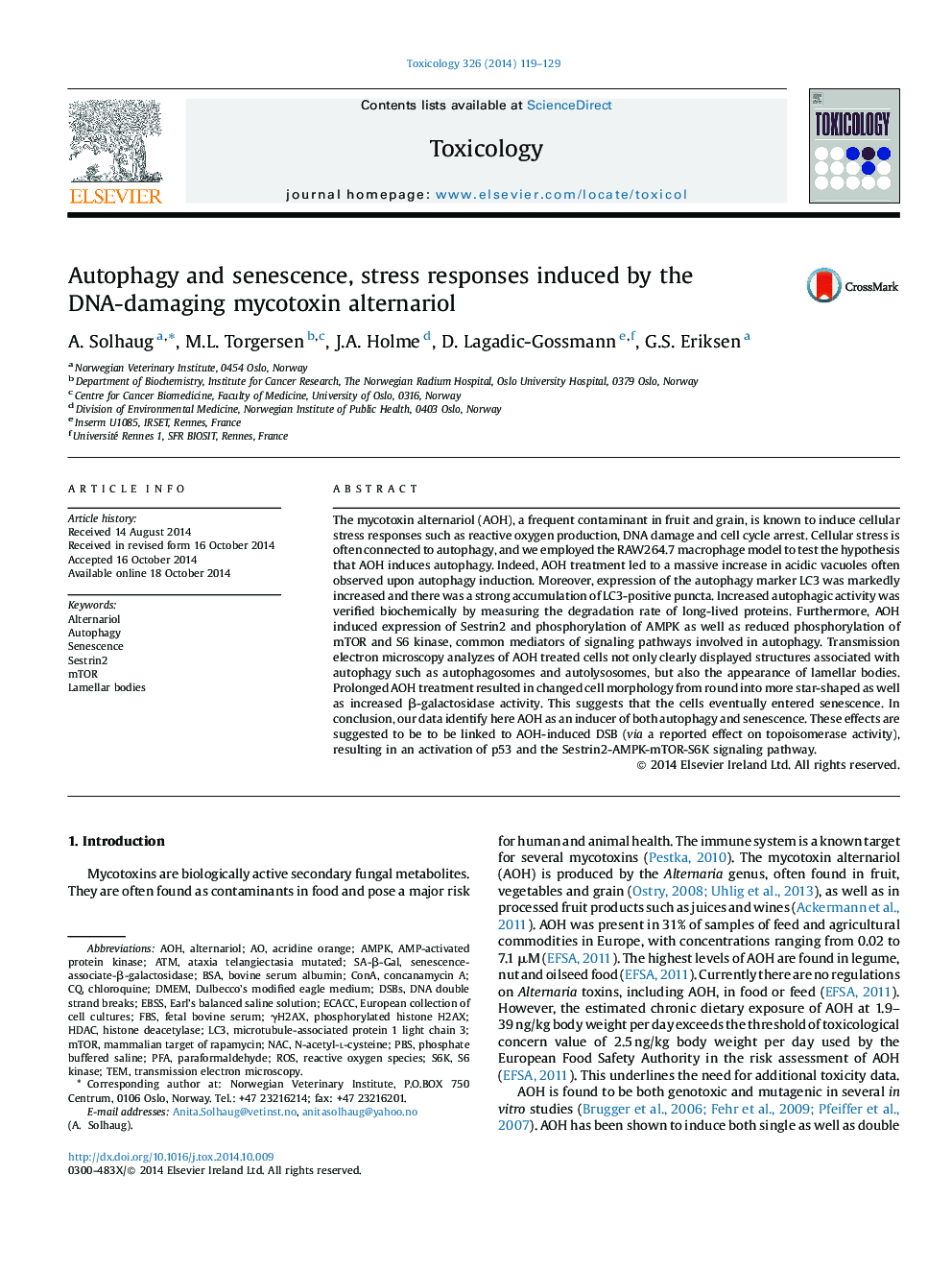| Article ID | Journal | Published Year | Pages | File Type |
|---|---|---|---|---|
| 2595512 | Toxicology | 2014 | 11 Pages |
•AOH induces autophagy, lamellar bodies and senescence in RAW264.7 macrophages.•DNA damage is suggested as a triggering signal.•The Sestrin2-AMPK-mTOR-S6K pathway is proposed to link DNA damage to autophagy.
The mycotoxin alternariol (AOH), a frequent contaminant in fruit and grain, is known to induce cellular stress responses such as reactive oxygen production, DNA damage and cell cycle arrest. Cellular stress is often connected to autophagy, and we employed the RAW264.7 macrophage model to test the hypothesis that AOH induces autophagy. Indeed, AOH treatment led to a massive increase in acidic vacuoles often observed upon autophagy induction. Moreover, expression of the autophagy marker LC3 was markedly increased and there was a strong accumulation of LC3-positive puncta. Increased autophagic activity was verified biochemically by measuring the degradation rate of long-lived proteins. Furthermore, AOH induced expression of Sestrin2 and phosphorylation of AMPK as well as reduced phosphorylation of mTOR and S6 kinase, common mediators of signaling pathways involved in autophagy. Transmission electron microscopy analyzes of AOH treated cells not only clearly displayed structures associated with autophagy such as autophagosomes and autolysosomes, but also the appearance of lamellar bodies. Prolonged AOH treatment resulted in changed cell morphology from round into more star-shaped as well as increased β-galactosidase activity. This suggests that the cells eventually entered senescence. In conclusion, our data identify here AOH as an inducer of both autophagy and senescence. These effects are suggested to be to be linked to AOH-induced DSB (via a reported effect on topoisomerase activity), resulting in an activation of p53 and the Sestrin2-AMPK-mTOR-S6K signaling pathway.
